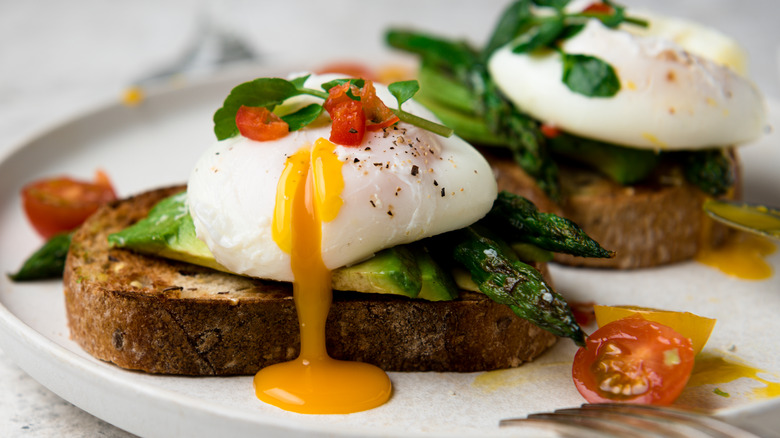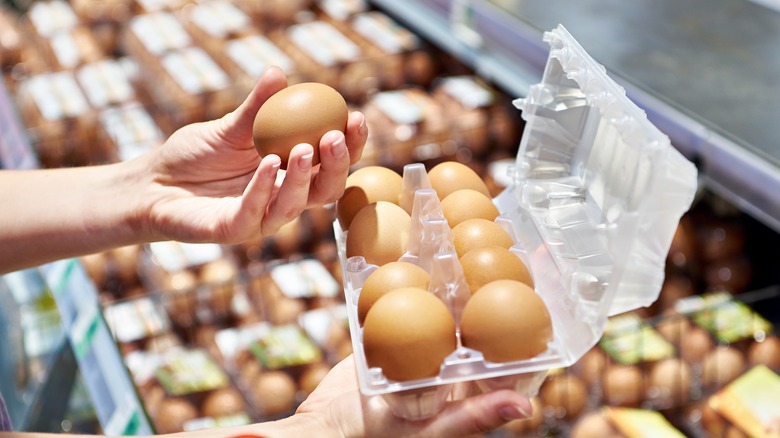The Mistake You Might Be Making When Selecting Eggs To Poach
Despite being essentially a one-ingredient dish, poached eggs can be incredibly difficult to master. Between making sure not to break the yolk as you drop the egg into simmering water, ensuring the egg white doesn't stray to all edges of the pan, and gently lifting the delicate yolk-filled pouch, there's a lot to keep in check. Nevertheless, one overlooked factor may be keeping you from leveling up: using anything other than the freshest eggs.
In the grocery store, one carton of eggs looks pretty similar to the next, with the contents varying only slightly by color and size. However, fresher eggs are higher in quality than older ones, particularly where the yolk is concerned. Fresh egg yolks are rounder, deeper in flavor, and tend to have a more saturated golden, almost orange, color. They also tend to hold together better when cracked and submerged in water for poaching. On the other hand, older eggs may have started to decay. This doesn't necessarily mean they're spoiled, but that the yolk has lost moisture and volume, becoming flatter and sometimes, even dry. This makes the yolk much more likely to break during the poaching process.
How to choose fresh eggs
Unless you have chickens, you won't be able to get the freshest eggs for your Saturday brunch — but you can get pretty close. Choose farm-fresh eggs when possible. You can get them from a local co-op, order directly from a nearby farm, or pick some up at an egg stand at the farmer's market. The time it takes for eggs to travel from farm to market can be as short as four to seven days, so they'll be wonderfully fresh for poaching.
If you can't buy farm-fresh eggs, you can still strategize to get some good eggs at your regular grocery store. It's legal to sell eggs 30 days after they've been put in a carton, so you need to pay attention to those pesky "sell-by" and "best-by" dates. Look for eggs with the latest expiration date, and poach them within a few days to maximize the benefits of freshness. The result will be velvety yolks, perfectly cocooned inside thin layers of egg whites. Serve them with hollandaise sauce for a classic eggs benedict or on a slice of gourmet-at-home avocado toast.

